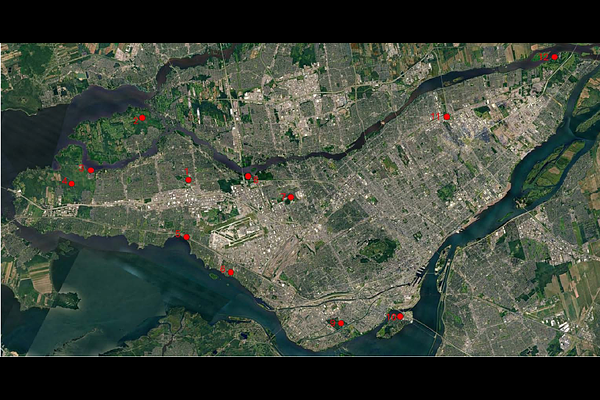The profiles of mammals, birds and fish in twelve water bodies on the Island of Montreal by mitochondrial DNA: detection of invasive animals and meat and fish waste

The profiles of mammals, birds and fish in twelve water bodies on the Island of Montreal by mitochondrial DNA: detection of invasive animals and meat and fish waste
Villemur, R.
AbstractThe Island of Montreal is composed of a variety of environments, such as undeveloped natural areas, urban parks, and dense residential areas. These environments are home to several types of surface waters, such as ponds, marshes, lakes, streams, and rivers, where some wild animals have adapted. Among them are exotic and invasive animals, which could displace natural animals or endanger people through unwanted interactions. The Montreal Urban Community (MUC) wishes to assess the extent of the presence of exotic or invasive animals in waterbodies on the Island of Montreal to coordinate mitigation measures. Here, I present animal profiles, primarily mammals, birds, and fish, from twelve waterbodies on the Island of Montreal using amplicon sequencing of mitochondrial DNA from environmental DNA. Water samples were collected, and total DNA was extracted. PCR amplifications of a portion of the mitochondrial 16S ribosomal RNA genome were performed with primers designed to primarily target mammals, fish, and birds. After sequencing, the animal lineages and their proportions were determined. Our results showed that invasive animals, primarily fish such as pumpkinseed, common carp or brown bullhead, were detected in high proportions in five water bodies. However, I did not detect any exotic animals. I also detect significant proportions of sequences affiliated with bovine, porcine and several marine fish species, which was unexpected as these animals are not living on the Island of Montreal. Given the commercial or industrial activities surrounding the water bodies, sequences of these unexpected animals are likely related to the release of meat or seafood waste into the water bodies. Our molecular approach is effective for assessing the animal profiles of water bodies. However, caution should be exercised when interpreting the presence of animal waste.